Sometimes there is a need to change the lighting intensity. This is done using the brightness regulators of light, which are more often called "Dimmer". Most of the devices are mounted instead of a conventional switch - right in the same mounting box, and many look like. How to connect Dimmer with your own hands? Simple - in the phase wire sequentially with the load. Installation schemes of regulators are simple, you can handle yourself.
Purpose and function
Dimmers (in English Dimmer) are used to adjust the brightness of the lamps, the temperature of the heating devices (soldering iron, irons, electric stove, etc.). These devices are called light brightness regulators or lights, although it is only one of the possible applications. The most effectively work with incandescent lamps, allowing you to extend their service life, since if there is a dimmer in the power supply circuit, a minimum current is fed to the lamp. And as you know, it is the starting throws that cause their failure.
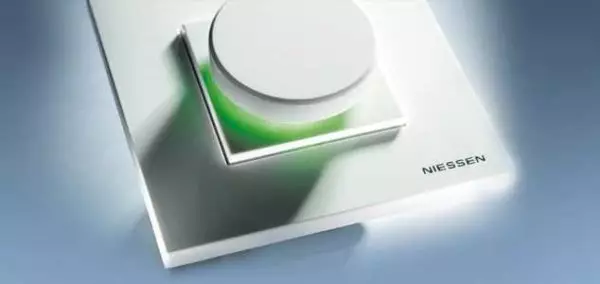
What did Dimmer look like
You can not use dimmers with transformer or pulse power sources (TVs, radio receivers, etc.). This is due to the features of the device operation - at the output, the signal does not look like a sinusoid, but only its part (the tops are cut into the keys). When submitting such food, the equipment fails.
Note! With fluorescent lamps, ordinary light controllers cannot be used. Such a bunch or will not work at all, or the lamp will flash. To work with these sources there are special devices with a different scheme. In general, conventional light drives can only control the incandescent lamps or LEDs. When connected to them, the energy saving begins "flashing" of light, and halogen is simply not regulated. But it is possible to regulate the brightness of light and for these types of lamps - there are special dimmers, but they are more expensive.
The very first lights were electromechanical and could only adjust the brightness of the glow of incandescent bulbs. Modern can provide a number of additional features:
- shutdown light by timer;
- Enabling and disable illumination at a certain time (the effect of presence is used for long departures);
- acoustic control (for cotton or voice);
- the ability to remote control;
- Various modes of operation of lamps - flashing, change in light temperature, etc.;
- The ability to embed to the Smart Home system.
The simplest dimmers are still only adjusting the lighting brightness, but this function is very useful.
Device and species
Dimmers are made on the basis of a different element base. All of them have their own characteristics and disadvantages. And to understand what dimmer is and how it works, you need to figure out what a specific device is made. So, there may be options:
- Based on the referee (in particular a variable resistor). This is the easiest, but also the most inefficient method of adjusting brightness. Such a device is very hot, so the cooling system is necessary, has an extremely low efficiency. Currently serially not produced.
- Electronic light-based lights based on simistors, thyristors, transistors. These devices cannot be used with technique, demanding to the form of the power supply, as at the output - something similar to the sinusoid with cropped tops. It is also worth knowing that such schemes can issue interference that interfere with the operation of radio receivers or sensitive to electrical machinery equipment. Despite its disadvantages, the electronic dimmers are used more often - due to low prices, small dimensions and the possibility of implementing additional functions.

Scheme of thyristor dimmer
- Dimmers based on the autotransformer. Such devices produce almost an ideal sinusoid, but have a lot of weight and size, great efforts are required to adjust. Another point: a more complex scheme leads to the rise in the regulator. However, they are presented in the market, are used in places where it is impossible to create radio interference or a normal form of supply voltage is required.
When choosing a device is not so important to know what type it refers, how much it is important to take into account the nature of the load, to which it will connect (incandescent and LED lamps or luminescent and housekeeping).
By type, dimmers are:
- Modular for installation in the electrochildren on the Dean Rake. Connect dimmer of this type with incandescent lamps, halogen luminaires with a downstream transformer. For ease of use, they have a remote control button or key switch. Such devices are convenient, for example, to regulate the illumination of the yard and the entrance gate from the house, the staircase or the front door.
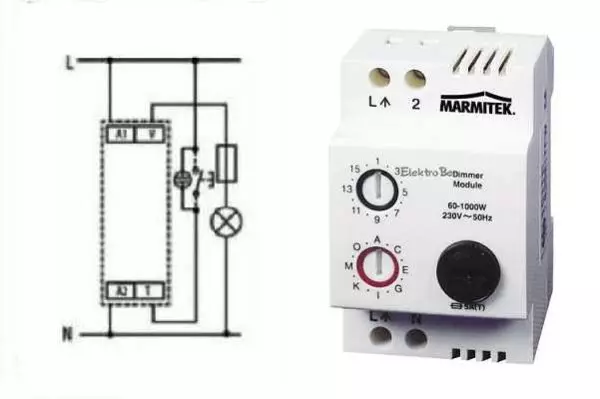
Modular dimmer and a diagram of its connection
- Dimmers on the cord. This is a mini-device that allows you to adjust the brightness of the lighting of the lighting instruments, which are included in the outlet - table lamps, sconce, floor lamps. It is only worth knowing that they are mainly compatible with incandescent lamps.

Dimmer on the cord can be installed on any desk lamp, sconce, floor lamp (with incandescent lamp)
- To install in the mounting box. Put in the mounting box for switch (in the same box). Compatible with incandescent lamps, LED, halogen down and electronic transformer. Controlled with a button that is installed on top of the device or connect to the Smart Home system.
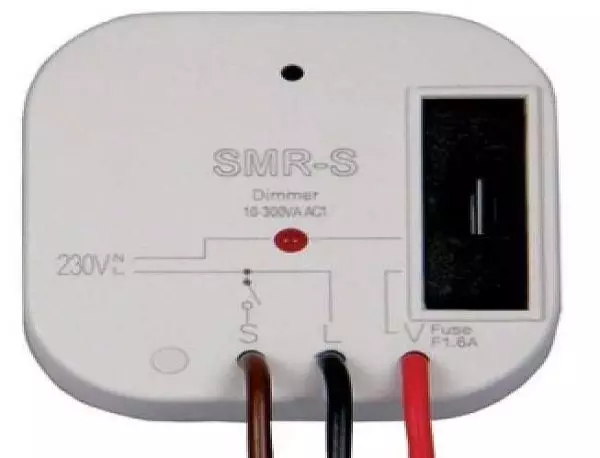
Dimmer for installation for switch
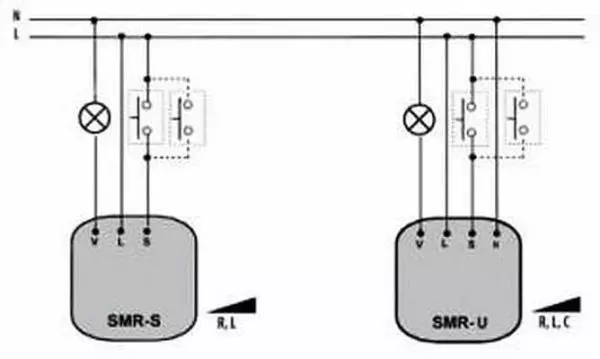
Dimmer Connection Scheme for Switch
- Monoblock. In appearance, the usual switch is very similar, it is placed in the same mounting box, you can instead of a switch. Included in the gap of the phase chain (the scheme below). This type has a large species diversity. With which lamps can be connected to such a dimmer, it must be indicated on the housing, but if it is an electronic circuit, they work with incandescent lamps and some halogen and LEDs (which are written by dimmable or worth a reporting sign). Can be managed:
- Using the rotary disk (swivel dimmers). Turning off the light occurs by turning the disk to the leftmost position. The lack of this model - it is impossible to fix the last value of the light. When turned on, the minimum brightness is always set.

Rotary and swivel-pressure models do not differ externally
- Swivel-push. According to appearance, it is similar, but the inclusion / off occurs by pressing the disk, and the adjustment is its turn.
- Keyboard. In appearance, very similar to ordinary switches. Turning on / off Light Standard - key transfer, and adjustment begins after keys keeled until more than 3 seconds. There are models in which the switching on-shutdown occurs with one key, and the adjustment is different.

Keyboards look like switches
- Touch. All control occurs with the help of the touch screen. These models are the most reliable - no mechanical details, almost nothing to break.
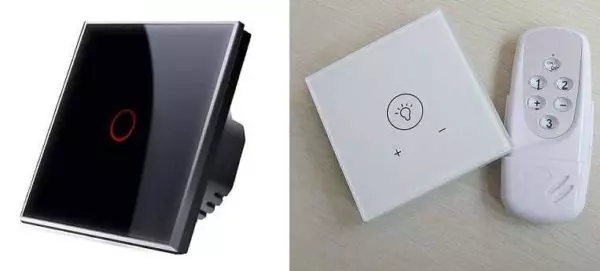
Sensory dimmers are good because they can have remote control
- Using the rotary disk (swivel dimmers). Turning off the light occurs by turning the disk to the leftmost position. The lack of this model - it is impossible to fix the last value of the light. When turned on, the minimum brightness is always set.
In private houses and apartments are most often monoblock dimmers. A modular design can still be useful in the house - to change the brightness of the discharging area with the possibility of controlling it from the house. For such cases there are models that allow you to control the illumination from two places - pass-through dimmers (work on the principle of the passing switch).
Monoblock Dimmer Connection Scheme
Most often, the monoblock controllers of light independently connect. They are put instead of a switch. With a single-phase network, the connection diagram is the same as on a conventional switch - sequentially with a load - in the phase break. This is a very important nuance. Dimmers put only a phase wire break. If the dimmer is incorrect (in the neutral break), the electronic circuit will be released. In order not to be mistaken, before installing it is necessary to accurately decide which of the phase wires, and which is neutral (zero).

Before you put a dimmer, you need to find a phase wire
If we are talking about installing the dimmer to the location of the switch, then you must first turn off the wires from the switch terminals (with a power panel shield), turn on the automatic and tester, multimeter or indicator (LED screwdriver) to find a phase wire (when touched by a dipstal to the phase on the instrument There are some testimony or the LED lights up, and no potentials should not be kept).
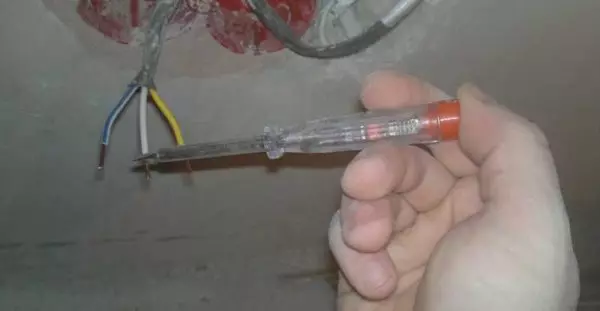
Definition of phase wire indicator
The found phase can somehow designate - put on the insulation the line, stick a piece of tape, color scotch, and the like. Then the power is turned off again (the input switch on the panel) - you can connect the dimmer.

Dimmer Connection Scheme
The light control circuit is simple: a phase conducted phase wire is fed to the device input, the wire goes to the load (in the figure on the junction box, and from there - on the lamp).
There are two types of dimmers - in the input and output contact is signed. In this case, you need to follow the instructions and file phase on the signed input. On other devices, the inputs are not signed. In them, the connection of the phase is arbitrary.
Consider how to connect a dimmer with a turning disk. First you need to disassemble it. To do this, take out the disk - it must be drawn over. The disk is a button that is fixed by the pressure nut.

Before mounting, the dimmer disassemble
We unscrew this nut (you can with your fingers) and remove the front panel. Under it is a mounting plate, which will be screwed to the wall. Dimmer is disassembled and ready to install.
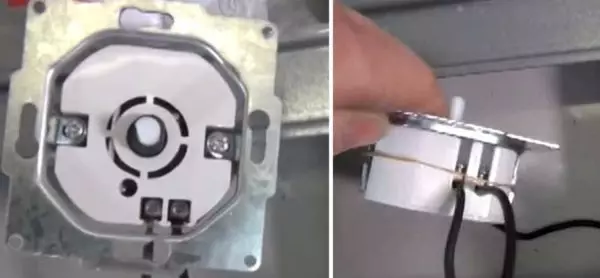
Light regulator without facial plate
We connect it according to the scheme (see below): the phase wire will start on one input (if there is a logging input, then on it), to the second input, connect the conductor, which goes to the lamp / chandelier.

Lamp connection diagram to dimmer
It remains to secure. Insert the connected knob in the mounting box, fasten it with screws.

Installation Dimmer
Then we apply the front panel, fix it with a previously removed nut and, at the last line we install the rotary disk. Dimmer installed. Turn on the power, check the work.

All is ready
How to connect a dimmer to a LED lamp (LED) or tape
There are no fundamental differences in the connection method. The peculiarity consists only that the dimmer is placed in front of the controller of LED lamps or tapes (see the circuit). There are no other differences.

How to connect a dimmer to LED lamps and ribbons
All exactly as well: the dimmer is put in the gap of the phase wire, but its output is fed to the input of the LED lamp or tape controller.
Installing the Light Brightness Controller Fibaro FGD211 with Switch
The feature of this model is that it is compatible with the Smart Home system and is controlled from the computer. There are devices controlled with a regulator installed in a convenient location.
Dimmers that are installed in the mounting box to the switch are also put in the gap of the phase wire, but the process of their installation itself is slightly different. The switch is also removed, we find the phase, the wire marked. Next, we take a dimmer, connect the jumper (segment of the copper wire in the shell) terminals 0 and N. To the contacts S1 and Sx connect the sections of the wires of 7-10 cm long.
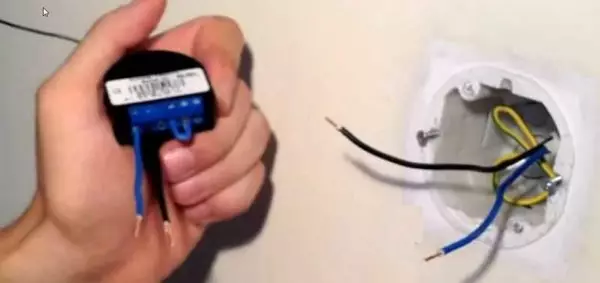
Conductors connected to Dimmer and put a jumper
The next step is to connect the regulator to the wiring. The phase wire is set to the connector with the letter L, zero - on N. The connected device is refueling to the mounting box (wiring).

Connect the regulator to the power
Next, the wires installed earlier in the S1 and SX sockets connect with the terminals on the switch (the order of any).
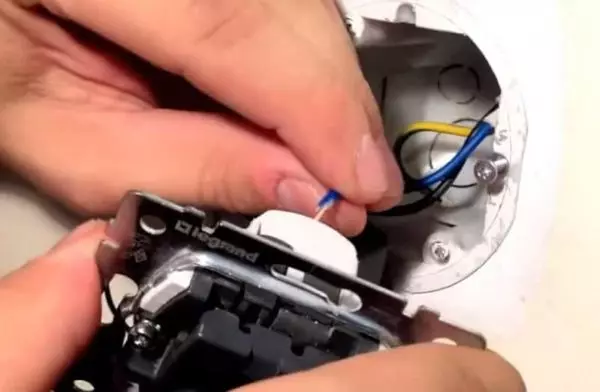
Connect switch
We screw the switch to the place, then wear the facial pad and keys, program the system and check the work.
If you need to connect a dimmer with a button control from a button, it will have two more contacts to which the remote button will be connected.
Features of choice and operation
When choosing a dimmer, it is necessary to pay attention not only to what lamps it can work and what functions it has. It is necessary to look at what the total load it is designed. The maximum of one brightness controller can "pull" 1000 W load, but most of the models are calculated on 400-700 W. Eminent manufacturers, depending on the capacity, there is a solid difference in price. Chinese products have no tangible difference in the cost.
| Naming | Power | Maximum current | Compatibility | Price | Manufacturer |
|---|---|---|---|---|---|
| Volsten V01-11-D11-S Magenta 9008 | 600 W. | 2 A. | Incandescent lamps | 546 rubles | Russia / China |
| TDM Valdai RL | 600 W. | 1 A. | Incandescent lamps | 308 rubles | Russia / China |
| Makel Mimoza. | 1000 W / IP 20 | 4 A. | Incandescent lamps | 1200 rubles | Turkey |
| World LEZARD 701-1010-157 | 1000 W / IP20 | 2 A. | Incandescent lamps | 770 rub | Turkey / China |
The second point that must be remembered - the lights are working with minimal load. In most cases, at least 40 W, some thousands are 100 W. If the connected lamps have a smaller power, they can flash or will not light up. This happens when instead of incandescent lamps put LED. In this case, one of the lamps leave the old (incandescent), which will provide the required minimum load.
Other features of operation are associated with compatibility. As already mentioned, ordinary dimmers cannot work with daylight lamps (with energy-saving including). Halogenic on changes to the shape of the pulse simply do not react. And if you decide to replace incandescent lamps to more economical, most likely you have to change the brightness knob.
Article on the topic: Gaming house for children: step-by-step photos, schemes, drawings
